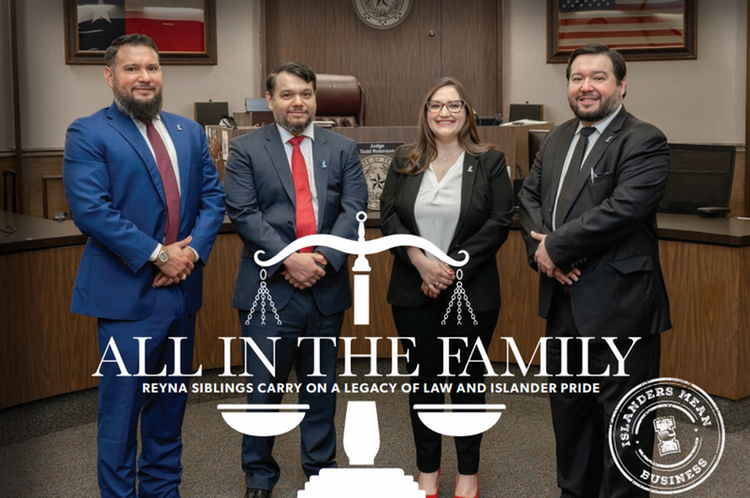Islanders Explore Links Between Rivers, Coral Reef Ecosystems in Belize Study Abroad Program
CORPUS CHRISTI, Texas – This summer, nine Texas A&M University-Corpus Christi students explored Mayan ruins, hiked through dense jungle, swam with nurse sharks, and examined via snorkel mask the effects of coral disease and bleaching as part of the Belize Coral Reef Study Abroad Program.
The class was led by Dr. James Hogan, Associate Professor of Life Sciences, and Dr. Kim Withers, Assistant Professor of Life Sciences. Dr. Hua Zhang, Assistant Professor of Engineering, oversaw the hydrological engineering aspect of the program.
“This is a joint Study Abroad program offered by the Department of Life Sciences and Department of Engineering,” Hogan said. “The purpose was to conduct research on coral reefs and associated ecosystems. We looked at the ecosystems holistically, so we spent time in the forests and the rivers upstream because they connect to the coastal environment just like they do here in Texas. A river brings water, it brings nutrients, it brings sediments, it brings all sorts of things downstream and out into the bays and estuaries, and in Belize – out onto the coral reef.”
The program was initiated and supported as a part of the LSAMP Undergrad Research Program directed by Dr. Frank Pezold, Dean of the College of Science and Engineering. Support for this team-based undergraduate research experience will run for five years. Students from Texas A&M International University and Prairie View A&M University will also participate.
The Belize Coral Reef Study Abroad Program consisted of two miniprograms. The first day and a half was spent at the Monkey Bay Wildlife Sanctuary near the capital city of Belmopan where students were introduced to a variety of forest ecosystems and explored the plant and animal diversity of the land. Students took a canoe trip down the Sibun River led by Dr. Ed Boles, a watershed conservation expert in Belize where they learned about the Watershed Continuum Concept and learned of the connection between the health of rivers and the health of coral reefs. The group then spent five days in the Mountain Pine Ridge Forest Reserve, a tropical upland forest; where the students explored different riverine habitats including head water streams, waterfalls, and limestone cave systems. This was capped off with a visit to a hydroelectric dam to discuss the balance between human resource needs and the river ecosystems. Students also visited a Mayan ruins site to learn about the local culture in Belize and the history of human interactions with the environment.
During the first week, mechanical engineering student Garrett Swenson set up a portable velocity meter across stream beds to collect data of flow velocities at different points.
“After collecting those point measurements and estimating the velocity profile of the river section, you can calculate the discharge of that particular river,” Swenson said. “Collecting data for multiple rivers allows you to have a better understanding of the water resources of a country.”
The second week was primarily spent at Tobacco Caye Marine Station on the Belizean Barrier Reef, the second largest barrier reef in the world, where four life sciences student pairs worked on four different projects focused on the ecology of coral reef ecosystems:
- Assessing the diversity of coral reef fishes;
- Determining the percent cover of live corals and seagrasses on the reefs;
- The prevalence of coral diseases on the corals; and,
- The prevalence of coral bleaching.
Biology major Ashton Parsley worked with environmental science major Susan McGuire to study how coral abundance and seagrass density changes from location to location. Parsley said she had worked on seagrass projects in the Laguna Madre system under the direction of Dr. Paul Zimba, Professor and Director of Coastal Studies, but this trip was her first experience on an open reef.
“In Laguna Madre, it's very controlled so you don't have currents affecting you the way we did at Tobacco Caye, so that was one of the hardest things to adjust to,” Parsley said. “We were able to say in our research paper that coral abundance there is significantly different than where it was five years ago. We were also able to say that there is a difference between these closed-off inland parts of the reef versus the open fore reef where you see all of the bigger animals that come in.”
Swenson said the experience was an eye-opener for him.
“It’s good to know that we are learning about these tools, methods, and procedures because researchers actually have to go out into the field and take these measurements to help engineers draw our conclusions and to work models out,” Swenson said. “So, it’s helpful to see both sides of it.”
Looking ahead to next summer, Hogan said the plan is to work with Zhang to expand the number of slots for engineering students from one to four. New engineering projects will involve collecting hydrological and water quality data, conducting hydrological designs and risk analysis, and identifying environmental changes from satellite images. Engineering students will have a unique opportunity to understand the impact of reservoirs on water and energy security and the role of coral reefs in coastal flood defense.
“Next year, we will have a joint biology-engineering program -- as we did this year -- with a focus on civil engineering and tropical ecology and biology,” Hogan said.
Additional Information
The Belize Coral Reef Study Abroad Program reboots the Coral Reef Ecology course that was taught by the legendary Dr. Wes Tunnell, who passed away in 2018 (http://g.tinyurl.com/y422ulcu). During its 32-year history, more than 300 students took Coral Reef Ecology. In the early years (1976-1993), the focus of the two weeks of field studies was the reefs in Veracruz, Mexico. Graduate students and instructors drove to the field site in a caravan of school vehicles, camping along the way. From 1996-2007, the focus of field studies was reefs in the Mexican Caribbean. Withers and others drove the gear and supplies to the field site (~1600 miles door-to-door) and transported Tunnell and students to the field site from the Cancun airport. The Belize program fulfills Tunnell’s wish for the course to continue at A&M-Corpus Christi.





















